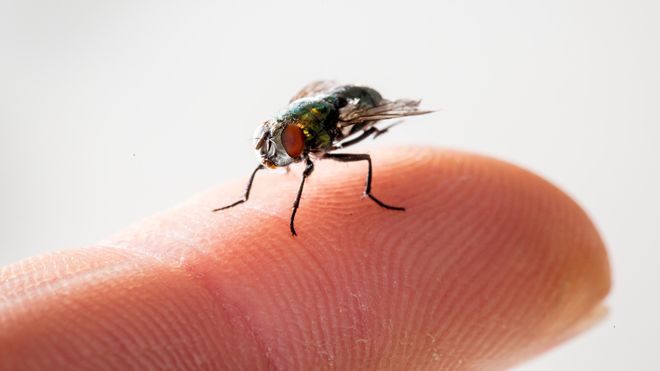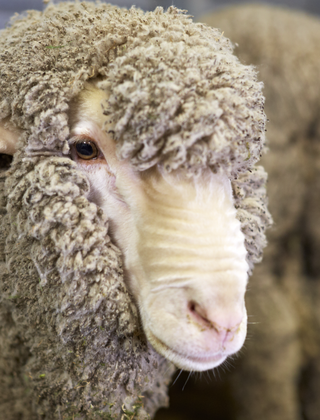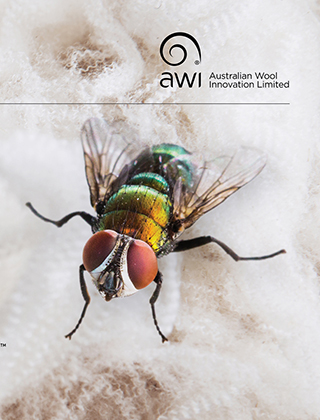Sterilised blowflies to reduce flystrike

A project is under way to release millions of sterile male blowflies on Kangaroo Island to see whether it will suppress the blowfly reproduction rate and population, and therefore the incidence of flystrike.
The release of masses of sterile male insects into the wild to mate with the females and thus reduce the next generation’s population is a method of biological insect control that has been successfully used worldwide for decades for numerous pest insects.
Examples include the screw-worm fly eradicated from North and Central America, and the tsetse fly eradicated from Zanzibar and Senegal in Africa. The technology has also been used in Australia to control or eradicate the Mediterranean fruit fly and Queensland fruit fly.
The Australian sheep blowfly Lucilia cuprina is thought to be a good target for this sterile insect technique (SIT). Sterilisation is induced through irradiation on the reproductive cells of the insects, and not through genetic modification.
KI project to suppress blowfly population
The release of sterile male blowflies on Kangaroo Island (4500km2 area, 600,000 sheep) in South Australia is under way in a project led by South Australian Research and Development Institute (SARDI), with the current (second) phase of the project funded by SARDI, AWI, Meat & Livestock Australia, Animal Health Australia, Livestock SA and the University of Adelaide.
If blowfly suppression on Kangaroo Island is successful, it would be a welcome boost for the local sheep and wool producers whose businesses suffered so badly during the 2019-20 bushfires. Furthermore, if there is a successful suppression of blowflies on Kangaroo Island, it could indicate that suppression on the mainland might also be possible.
AWI Program Manager, Animal Wellbeing and Industry Resilience, Carolina Diaz, says that there is no guarantee that the project will be successful, but the rewards could be significant if it is.
“It is hypothesised that if producers could work together to strategically release sterile male blowflies within defined regions at targeted times, it might reduce fly pressure and thus reduce woolgrowers’ need for other fly management tools such as mulesing or chemicals,” Carolina said.
“However, it is important that the sterile male blowfly density is sufficient to dominate the already present wild, non-sterile male population, so there is less competition for the sterile blowflies to mate. Even if initially successful, there is always the risk that wild populations could be reintroduced through uncontrollable biosecurity gaps.
“The relative isolation of Kangaroo Island means that it is a good testing ground for the technology, but it must remain biosecure from the mainland’s wild blowfly population otherwise it will be at risk of re-introductions.”
Rearing and release of blowflies
In the first phase of the project, jointly funded by the South Australian and Australian Governments, SARDI set up a mobile modular facility for the mass rearing of sterile blowfly males on Kangaroo Island and started production.
In the current (second) phase, sterile blowflies are being released on the Dudley Peninsula (650km2) on the eastern end of Kangaroo Island which will be followed, if successful, by three years of large-scale releases across the rest of the Island.
This will require the rearing of a massive 40-50 million blowflies per week. Rearing and harvesting equipment, diet composition and climate control will need to be developed and optimised for production at this industrial scale.
“The sheep blowfly on Kangaroo Island should be a perfect target for eradication through sterile insect technique, but that does not mean it will be easy,” said SARDI Researcher, Maarten van Helden. “Our experience in fruit fly rearing in the SITplus facility in Port Augusta helps, but we will be challenged to develop these production volumes for the much bigger sheep blowfly.”
To increase efficiency and reduce costs for future applications, project work will include research into the optimisation of the SIT, the ecology of the blowfly (population dynamics, mobility, distribution), optimisation of rearing techniques, and best practice release techniques (rate, frequency, flight paths, height and speed).
The project will also establish monitoring networks to obtain data on population levels and activity periods plus, hopefully, a subsequent reduction in flystrike. Collaboration with stakeholders (farmers, vets, students) will be sought to collect the information.
This article appeared in the March 2024 edition of AWI’s Beyond the Bale magazine. Reproduction of the article is encouraged.














